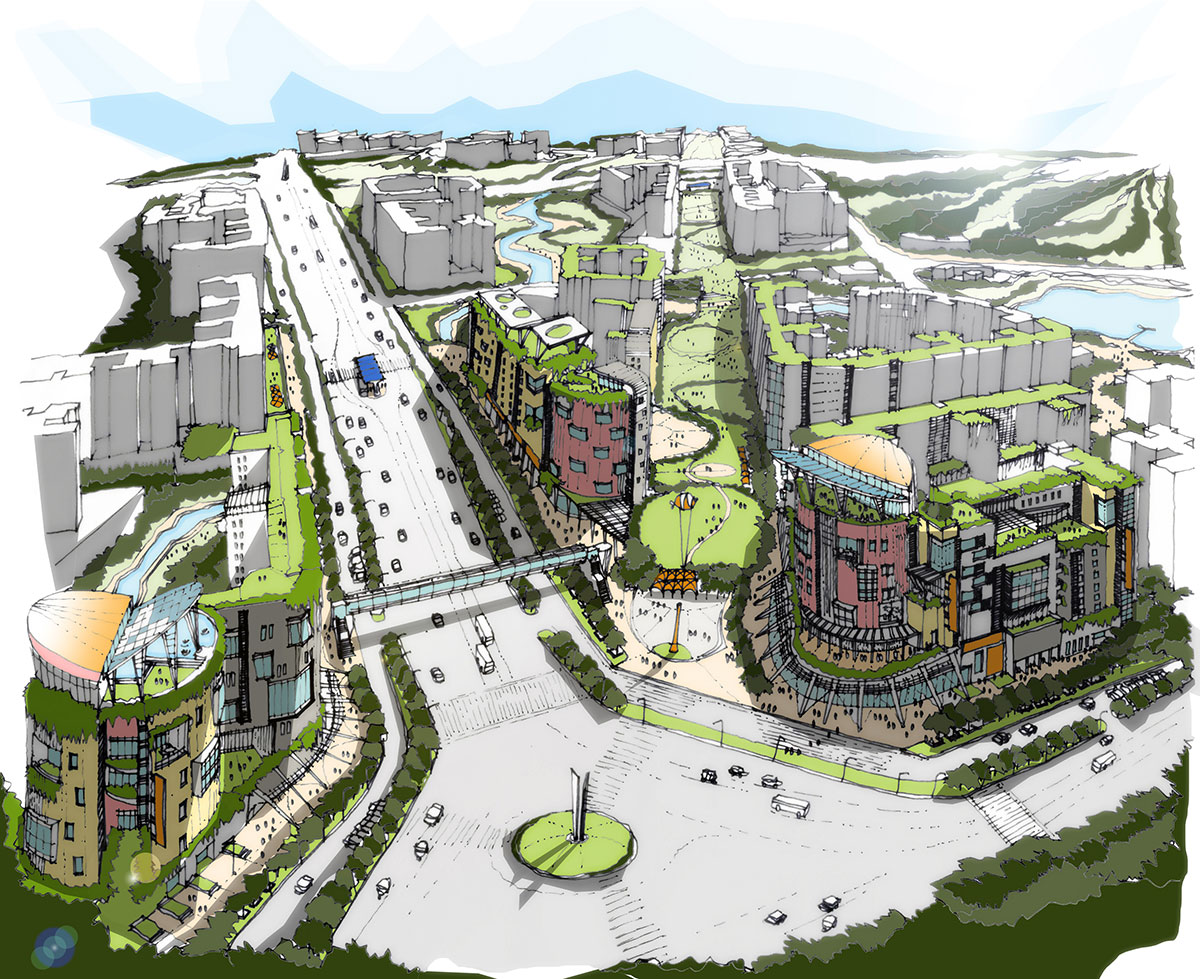#{Title}
#{Copy}

With 90% of global urban growth expected to take place in Asia and Africa, understanding how we can plan for successful city growth on those continents becomes paramount. Head of Urbanism Francis Glare looks at how our experience of working in India is informing our masterplans with an emphasis on infrastructure and retrofitting and lower density neighbourhoods.
Research by the LSE Cities Unit recently concluded that whilst the average population growth of 200 world cities in the period 1990 to 2050 was likely to be 300%, the physical footprint of those cities would increase by 500%. This, so LSE argue, implies that cities will become less dense, with profound implications for environmental sustainability.
With 90% of global urban growth expected to take place in Asia and Africa, understanding how we can plan for successful city growth on those continents becomes paramount. Smart City programmes have been cited as a solution but BDP's experience in India suggests that so far there is a heavy focus on basic infrastructure provision (albeit with higher levels of embedded technology than before) and retrofitting, and that where new urban extensions are proposed, these are likely (and probably rightly) going to be at a lower density than the existing super-dense central neighbourhoods and informal settlements.
It seems therefore inevitable that the city footprint will outpace population growth and that whilst we should avoid 'sprawl', the focus should be on delivering sustainable urban growth rather than maximising density for its own sake. This means moving away from the notion that larger cities necessarily imply more traffic miles – they don't, not if you develop polycentric cities with multiple cores. But it does require some work to understand what an environmentally sustainable urban design would be, on the optimal balance of infrastructure, density and crucially – 'place'.

City neighbourhood masterplans designs for the new state capital of Naya Raipur in India